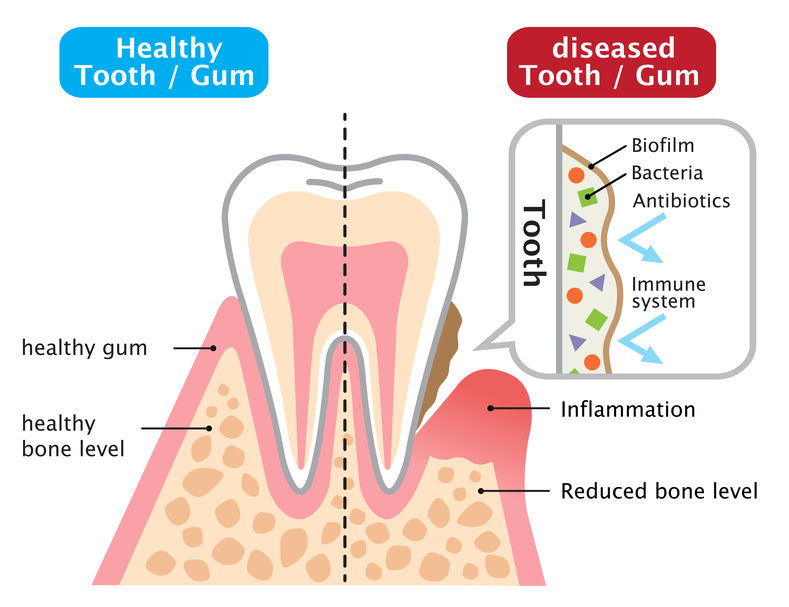
Most people are familiar with biofilm, even if they haven’t heard that term for it. Biofilm is another word for plaque buildup. When plaque forms over the teeth, it eventually becomes a film of bacteria that sticks to the surface of the teeth. It’s not visible to the naked eye, and good brushing habits alone aren’t always enough to remove it.
Biofilm and plaque buildup are preventable. Avoiding them requires daily dental care, and it’s important to pay attention to those hard to reach areas between the teeth. Biofilm is common, and the biggest issue is ignoring it.
ToothShower Water Flosser Invented by a Dental Hygienist
Problems from Biofilm
If biofilm is left unchecked, bacteria can grow between the teeth and gums, creating periodontal pockets. This leads to inflammation, gingivitis, and other types of periodontal disease that cause pain, sensitivity, and bleeding gums. It also creates caries, more commonly known as cavities. Once cavities form and the teeth decay, the lost bone is gone for good.
Biofilm forms when people eat sugary foods. The sugars break down into acids, which then damage teeth. The plaque holds on to the acids and lets them adhere to the teeth, eroding the enamel. Since the biofilm can’t be seen, neither can the gradual erosion beneath it—at least, not until it’s too late.
The worst part is that teeth with biofilm and other plaque issues can appear clean. It can seem like daily brushing is doing the job just fine when in reality, plaque is building between the teeth and causing decay. Therefore, it’s important to treat the problem before it becomes one and practice proper dental hygiene early on.
How to Get Rid of Biofilm
What happens when biofilm becomes an issue? Can it be resolved, and good dental health restored? The good news is yes, it can. While any kind of flossing is key to maintaining clean, healthy teeth and gums, a water jet is ideal. A water jet, or water flosser, uses water pressure to clean plaque from between teeth (and it’s more comfortable than string floss).
If there’s any doubt that the teeth aren’t being properly cleaned and biofilm is suspected, a disclosing tablet can help. These tablets stain the teeth with dye to show any invisible plaque. Disclosing tablets are available at almost any pharmacy and are a great resource for finding out how clean teeth really are. Besides, it’s much easier (and more satisfying) to watch the plaque disappear if it’s visible on the surface of the teeth.
While there are many types of water flossers available, it can be hard to choose the best one to remedy the biofilm problem. Toothshower can help there. As a water jet that hangs on the wall inside the shower, it makes dental care simple, saves time, and eliminates the mess and clutter of other water flossers.
Why is a water jet the best option for removing biofilm? First of all, it’s more comfortable for the user. It doesn’t involve trying to fit fingers in the mouth to get that last crevice between molars. Water flossers are also less painful if the gums are already sensitive, whereas string floss is more likely to cause bleeding. With less pain, people are more likely to use shower flossers / water flossers like Toothshower—they get results without feeling like they’re being punished for neglecting their dental health, and they see the difference in their smile.
The post What is Biofilm on Your Teeth? appeared first on ToothShower.


Leave a comment (all fields required)